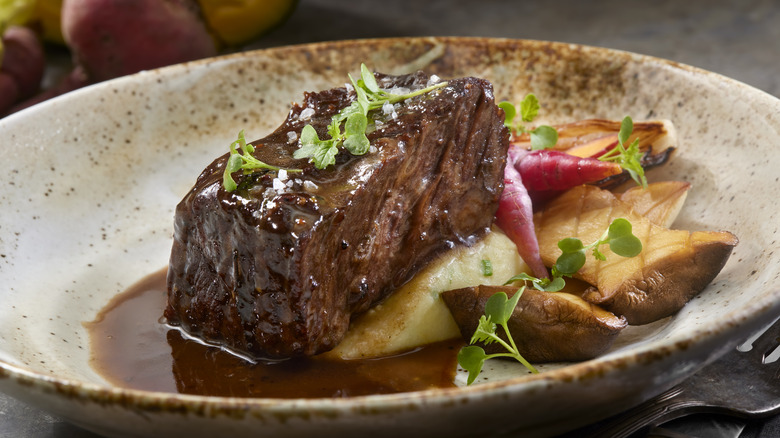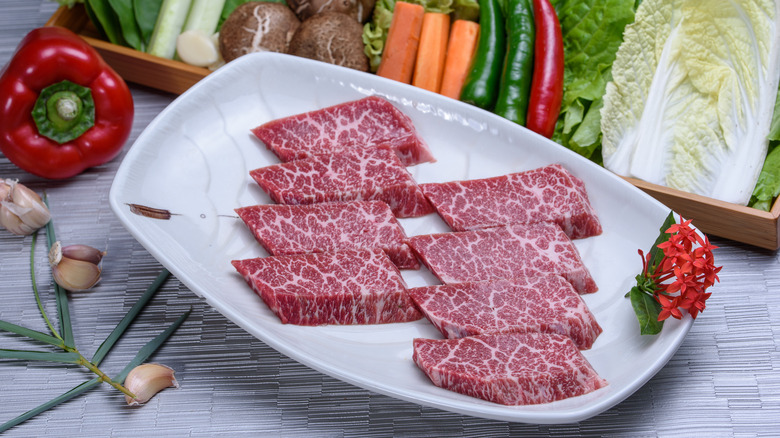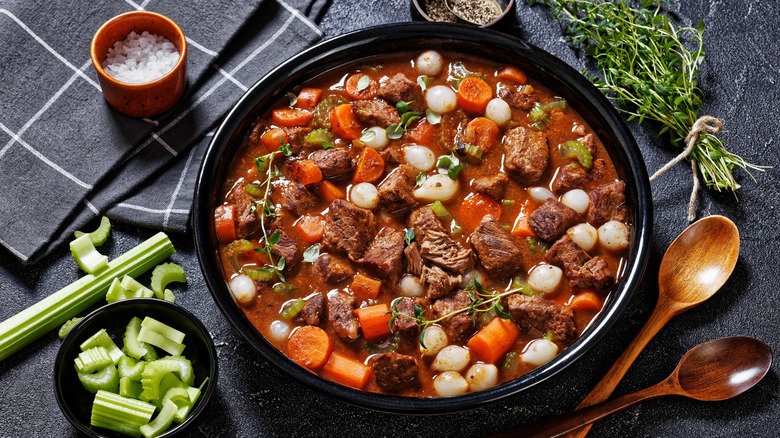Chuck Flap: The Rich Beef Cut You Need To Try Slow-Cooking
Let's be honest: The names of beef cuts are often confusing. From sirloin to strip steak to ribeye and eye of round, it's all too easy to mix up different parts of the animal. Yet if you know the specifics of a certain cut, you can unlock marvelous meat magic. One of the best examples of such hidden potential is the chuck flap, also known simply as flap meat and the edge roast.
Hidden away in the chuck — or shoulder region — of the cow, it's one of the areas of the animal that work best for slow-cooking. Of course, not every cut of beef is a steak, and that lends the chuck flap some special advantages. It's a part of the animal saturated in meaty flavor, and has excellent marbling.
Such qualities give the cut a tender consistency after some slow-cooking. Its fat amplifies the texture and flavor of the meat, and its chewiness relaxes. So, seek out some of this special chuck from your local butcher. It'll be sure to impress.
Chuck flap hails from the shoulder
The chuck flap is a small section from the shoulder. In the broadest butchering terms, it starts with the square cut chuck, a primal region that's one of the first isolated sections. This area contains the bones which connect the front shoulders with the backbone. Once these are removed, a large chuck piece remains, ready to be divvied up further.
One section is the chuck roll, and it's from here that the chuck flap is cut. This subprimal region also yields country-style ribs and the great-tasting Delmonico steak, popularized by the eponymous New York steakhouse. This area also neighbors the ribs and involves a bit of beef from the lower bones. As a result, chuck flap's resemblance to its neighbor may even give it the label of boneless short ribs for convenience. While distinct, the beef does offer similar culinary qualities.
Slow cooking benefits this cut due to its impact on muscle density. These tougher strands are surrounded by collagen, which makes chuck flap chewy. However, with a long cooking time, it melts into gelatin, which is further accelerated by its abundant marbled fat. As a result, the cut is tenderized, creating a juicy bite.
Chuck flap shines in slow-cooked dishes
The chuck flap is great for braising; it packs in fat and flavor that melds perfectly with the culinary technique. Due to its composition, the meat effectively absorbs marinades, seasonings, and braising liquids, meaning it's easy to transform it into an extra-flavorful dish. Use it in slow-cooked favorites like ratatouille with beef or beef bourguignon. Or just employ it in a classic braise with alliums and mushrooms. And it makes for a delicious stew, as long as you avoid some common mistakes when cooking the beef.
It's also an excellent candidate for a shredded beef recipe like ropa vieja, readily separating into different strands. And if you prefer meat with a bit of pink, it's great for a roast, although you might want to employ the sous vide method to attain ideal doneness. Plus, in Korean cuisine, you'll also find chuck flap grilled on a medium flame for a short duration. Especially when sourced with wagyu quality, the cut boasts outstanding fat marbling, which with a marinade, overcomes some of its chewier qualities. However, to get that magic succulence, you'll want to stick to a slow simmer.


